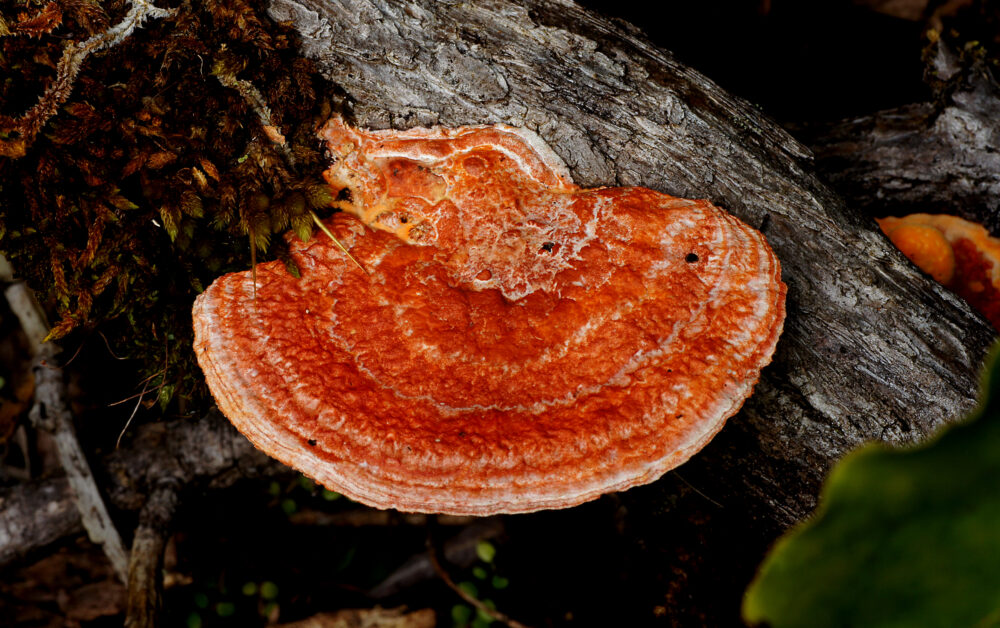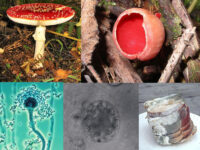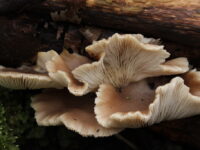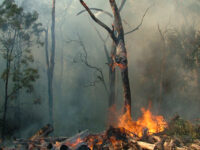As climate change escalates, preventative measures to reduce global warming are almost futile without a uniform attempt by civilization. Damage control is likely the future of sustainability and fungi may be an effective way to help in the restoration of forests after a wildfire.
Below the typical fruiting body or mushroom we see on the surface, the body of a mycorrhizal fungus is made up of a long and dense network of silk-like threads called hyphae. Under the soil, this extraordinary root system stretches for miles obtaining water and nutrients not readily available to the fungus’ main body. Not only can the fungus gather nutrients from miles away, but it can also store them for later use. The hyphae threads also intertwine with plant roots, allowing for the exchange of phosphorus, nitrogen, and water in exchange for sugars and carbon.
Both plants and fungi benefit from this bidirectional nutrient transfer. This mutualistic symbiosis between mycorrhizal fungi and a plant’s root system is called mycorrhiza and is incredibly valuable to both groups, specifically to the health of the plants. “Understanding and promoting the growth of mycorrhizal fungi is essential to the health of redwood forests and is especially critical for regeneration of damaged habitat,” said Patricia Kaishian, a well-known mycologist.
Forests scorched by fire become severely damaged habitats and are frequent in California. According to the Center for Disaster Philanthropy’s recent report, there have been 7,095 fires and 362,232 acres burned in 2022. Most high-intensity wildfires in coastal California occur during the summer months of June, July, and August. Zach Pipkin, a data analyst at Tableau Software Development, defines fire as high-intensity if it damages more than “75% of vegetation, extending into the canopy level.” The high heat leaves the soil nitrogen-deficient and no longer able to hold moisture. Soil after a high-intensity forest fire has essentially no nutrients, but this is where mycorrhizal fungi come in.
Fungi store hoards of spores deep under the soil where they are safe from forest fires. A single spore can develop thousands of hyphae threads and bring needed nutrients to new and existing plants from afar. Fungi have unique trait combinations and are more likely to survive off the unique nutrients resulting from a forest fire than plants due to their “vast hyphal network, … high surface area to volume ratio, resistance to heavy metals, adaptability to fluctuating pH and temperature and presence of metal-binding proteins,” according to molecular biology researchers Nahid Akhtar and Mohammad Amin-ul Mannan.
Some specific species, like the Clitocybe Nuda fungi, have distinctive capabilities of adapting to many environments and ecosystems. This soil-dwelling fungus is frequently found in or around redwood forests and is compatible with coastal redwoods. Its unique adaptability allows the fungus to quickly acclimate and utilize the meager nutrients remaining after the fire, thus helping the plants it is in symbiosis with. There is even a whole genus of fungi that have evolved to thrive off of fires: the Pyronema fungi. Ultimately, this mutualistic relationship between fungi and redwood trees is only one example of how powerful nature can be in healing itself. Global warming will continue to be a threat to our ecosystems, but with research into different symbiotic relationships like this one, we can work with our environment to better protect it.
Image courtesy of Wikimedia Commons






